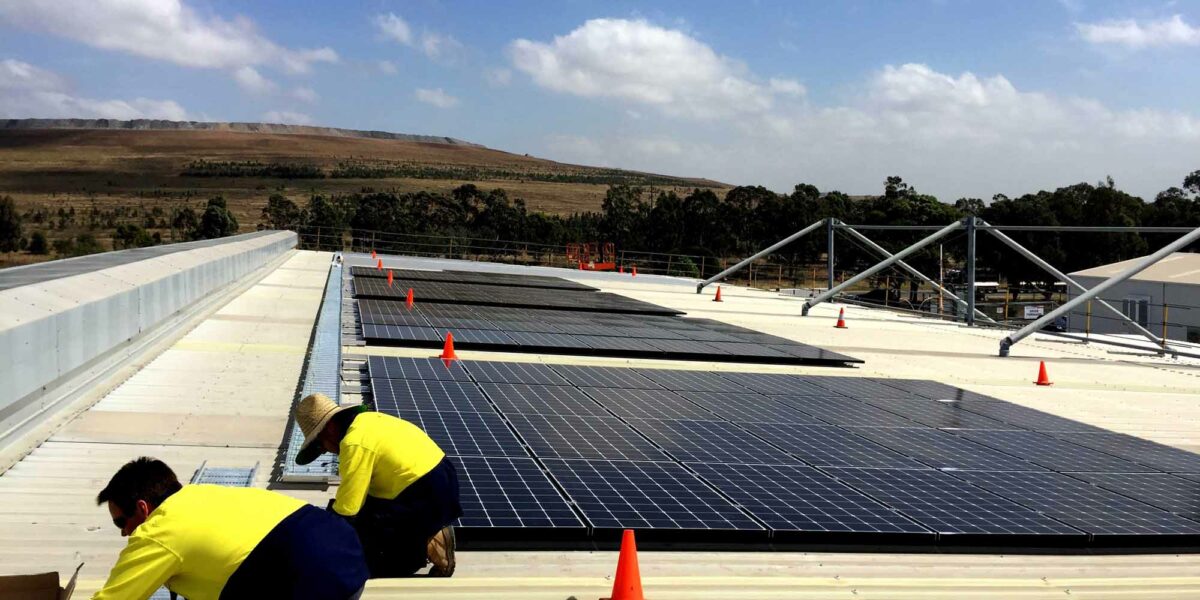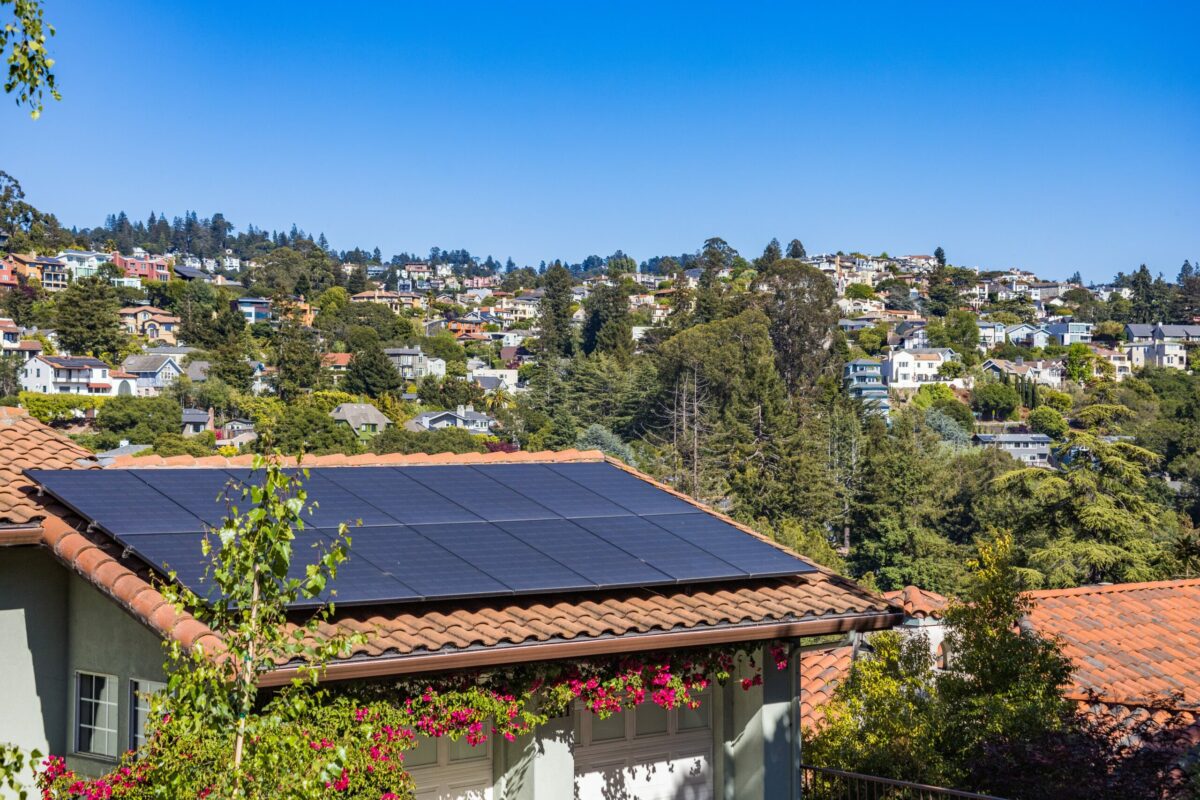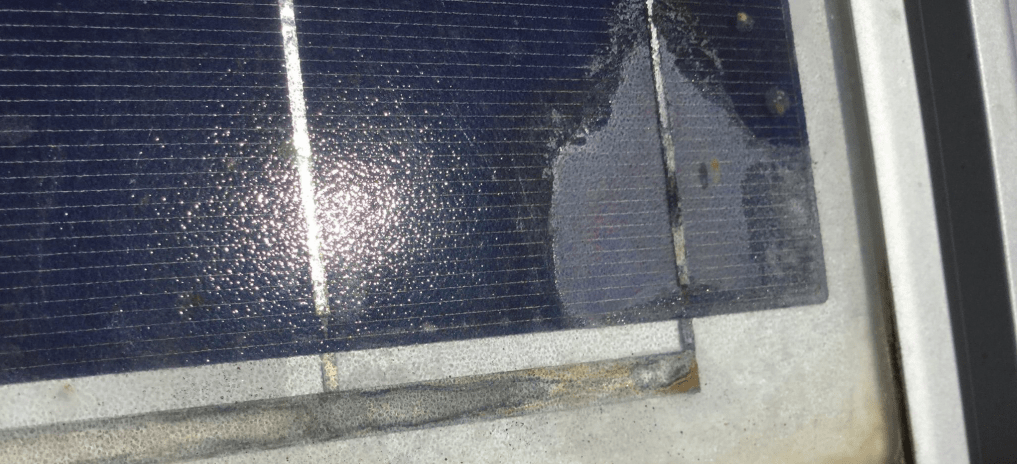What Are Solar Panels Made Of?
- Logan Haggerston
Solar panels are essential for harnessing solar energy, an increasingly popular renewable power source in Australia.
In this helpful guide, we will explain the solar panel manufacturing process and the role of the anti-reflective coating, look at how modern solar panels do what they do, and answer the question – what are solar panels made of?
What is a Solar Panel?
At their core, solar panels consist of multiple solar cells, usually made of silicon, a semiconductor element abundantly available in sand. These silicon cells convert sunlight into electrical energy through the photovoltaic effect, a process where light photons displace electrons, creating a flow of electric current.
A solar panel’s construction involves several layers including silicon cells, protective materials, and conductive pathways. The cells themselves may be monocrystalline or polycrystalline, with monocrystalline cells being more efficient due to their uniform structure.
A layer of anti-reflective glass covers the solar cells to maximise light absorption and protect them from environmental elements. Metal frames typically encase the assembled layers, providing additional durability and ease of installation for residential and commercial use.
The Main Components of Solar Panels
Solar panels are crafted with a combination of several key materials that enable them to harness solar energy. These components include silicon solar cells that generate electricity, metal framing for structural support, a protective glass layer, and necessary wiring for electrical connectivity.
Silicon Solar Cells
A Solar cell is at the heart of a solar panel, where sunlight is converted into electric current. They are typically made from silicon, a material chosen for its semiconducting properties. There are two main types of silicon solar cells:
- Monocrystalline: Made from a single, pure silicon crystal, these cells are highly efficient but generally more costly.
- Polycrystalline: Composed of multiple silicon crystals, they are slightly less efficient but more affordable.
Metal Framing
The structural component of solar panels is the metal framing, which provides rigidity and durability. Most solar panels are made from aluminium due to their strength and lightweight properties, making them ideal for mounting on various surfaces, including residential rooftops.
Glass Layer
A layer of toughened, tempered glass protects the silicon cells from environmental factors such as weather and debris. This glass must be transparent to allow sunlight to penetrate and be resilient enough to withstand the elements.
Wiring and Busing
The electrical components of solar panels include wiring and busing, which facilitate the flow of electric current:
- Wiring: Copper is often used for the wiring due to its excellent conductive properties.
- Busing: These conductive strips connect individual solar cells within a panel, forming a series circuit that enables the current to flow through the panel.
Types of Solar Panels
Choosing the right type of solar panel can mean long-term efficiency and performance. During the decision phase, the question is often raised – Polycrystalline vs Monocrystalline.
Solar panels are predominately made from silicon and come in several key types, each with its own characteristics, so let’s look at these now.
Monocrystalline
Monocrystalline panels are recognised by their uniform dark appearance and rounded edges. They are made from single-crystal silicon, allowing for a more straightforward path for electrons and thus greater efficiency. The efficiency levels for monocrystalline panels exceed 20%, which is among the highest in solar technologies.
Polycrystalline
Polycrystalline panels are easier to identify by their bluish hue and square shape. These panels are composed of multiple silicon crystals, which makes them slightly less efficient than monocrystalline ones. However, they offer a cost-effective solution, with efficiency typically ranging from 15% to 17%.
Thin-Film
Thin-film solar panels are distinguished by their light weight and flexibility, opening up a diverse range of applications including on surfaces that can’t support heavier panels. Although generally less efficient than crystalline-based solar panels, with efficiencies often below 15%, thin-film panels can be cost-effective for large-scale installations and are optimal for temporary or portable setups.

How Do Solar Panels Work?
Now that we have answered the question of what solar panels are made of, it’s time to look at how solar panels work.
- Sunlight Hits the Panels: Solar panels comprise of many individual solar cells, typically made from silicon. When sunlight hits a solar cell, it generates an electric current.
- Conversion of Light to Electricity: Each solar cell has layers of silicon, a semiconductor material. When sunlight hits the cells, it knocks electrons loose from their atoms. Electric fields in the solar cells then push these electrons into a directional current, generating electricity.
- Direct Current (DC) Conversion: The electricity generated by the solar cells is in the form of direct current (DC). This electricity can be used immediately to power devices that use DC, such as lights or batteries.
- Inverter Conversion: However, most homes and businesses use alternating current (AC) electricity. So, the DC electricity produced by the solar panels is sent to an inverter, which converts it into AC electricity that can be used by household appliances and sent to the grid.
- Usage or Export: The electricity generated by the solar panels can be used directly in the building where the panels are installed. If the panels produce more electricity than is used, the excess can be exported back to the grid.
- Net Metering (if applicable): Many homes and businesses in Australia have net metering systems. With net metering, if you produce more electricity than you use, the excess is fed back into the grid, and you receive a credit on your electricity bill for the surplus electricity you provide.
Manufacturing Solar Panels
When you create solar panels, silicon is the fundamental material, shaped into blocks or ingots. These ingots undergo a cutting process to produce thin slices known as wafers. Slicing is typically done using a wire saw, which results in wafers as thin as 200 micrometres.
After wafers are cleaned, they are subjected to a process called doping. Phosphorous is diffused into the top layer of the wafer to create a negative charge. The opposite side is doped with boron, yielding a positive charge.
This treatment forms a p-n junction, crucial for converting light into electrical current. Metal conductors are screen-printed onto the wafers, forming a grid-like pattern on the solar cell’s surface.
The solar cells are then meticulously assembled into solar panels. Each cell is interconnected in a series to build up the desired voltage. The cells are then sandwiched between a durable back sheet and a glass cover to protect against environmental factors. A frame, typically aluminium, is added to provide strength.
The final structure includes:
- Glass (front)
- EVA (Ethylene-Vinyl Acetate) layer (encapsulant)
- Solar cells in series
- EVA layer (encapsulant)
- Backsheet (rear)
- Junction box (housing for electrical connections)
Efficiency Factors
To optimise the performance of solar panels, it’s important to consider the purity of the materials used, the structural design of the panels, and the environmental conditions affecting their operation.
Material Purity
The efficiency of a solar panel is strongly influenced by the purity of the silicon used to make photovoltaic cells. High-purity, single-crystal silicon, known as monocrystalline, typically yields efficiency levels above 20%.
In contrast, polycrystalline silicon generally results in lower efficiency, around 15% to 17%, with its multiple crystal boundaries.
Panel Structure
The configuration and layout of photovoltaic cells within a solar panel dictate the overall panel structure efficiency. An improvement in cell design or an increase in the panel size can lead to more efficient light absorption and, consequently, higher power output.
Environmental Impact
External conditions can considerably impact a solar panel’s efficiency. Panels typically reach peak efficiency between 15°C and 35°C. Temperatures above this range can cause efficiency to decline. Additionally, shade, dust, and debris accumulation diminish the effective surface area exposed to sunlight, thus reducing the panel’s operational efficiency.
Key Takeaways
- Solar panels are made from layers including an aluminum frame, tempered plexiglass, EVA, silicon solar cells, more encapsulant, a back sheet, and a junction box.
- The efficiency of converting sunlight to electricity primarily depends on the type of silicon used: monocrystalline (more efficient and expensive) or polycrystalline (less efficient but cheaper).
- Solar panels work by converting sunlight into electricity through the photovoltaic effect within silicon cells.
- The manufacturing process involves extracting silicon, forming it into wafers, adding conductive layers, and assembling the cells into panels.
- Silicon is chosen for its semiconductor properties, efficiency, non-toxicity, corrosion resistance, and abundance.
Considering Investing in Solar Power?
Solar power is important in moving towards renewable energy and more efficient power usage. If you consider installing solar panels at your home or business, now’s the time!
HCB Solar is proud to be Newcastle’s most trusted partner in solar installation, using only the highest quality products to provide your solar system with a return on investment for decades.
Contact us today to learn more about how we at HCB Solar can help you benefit from installing a solar power system in your home or business today.





